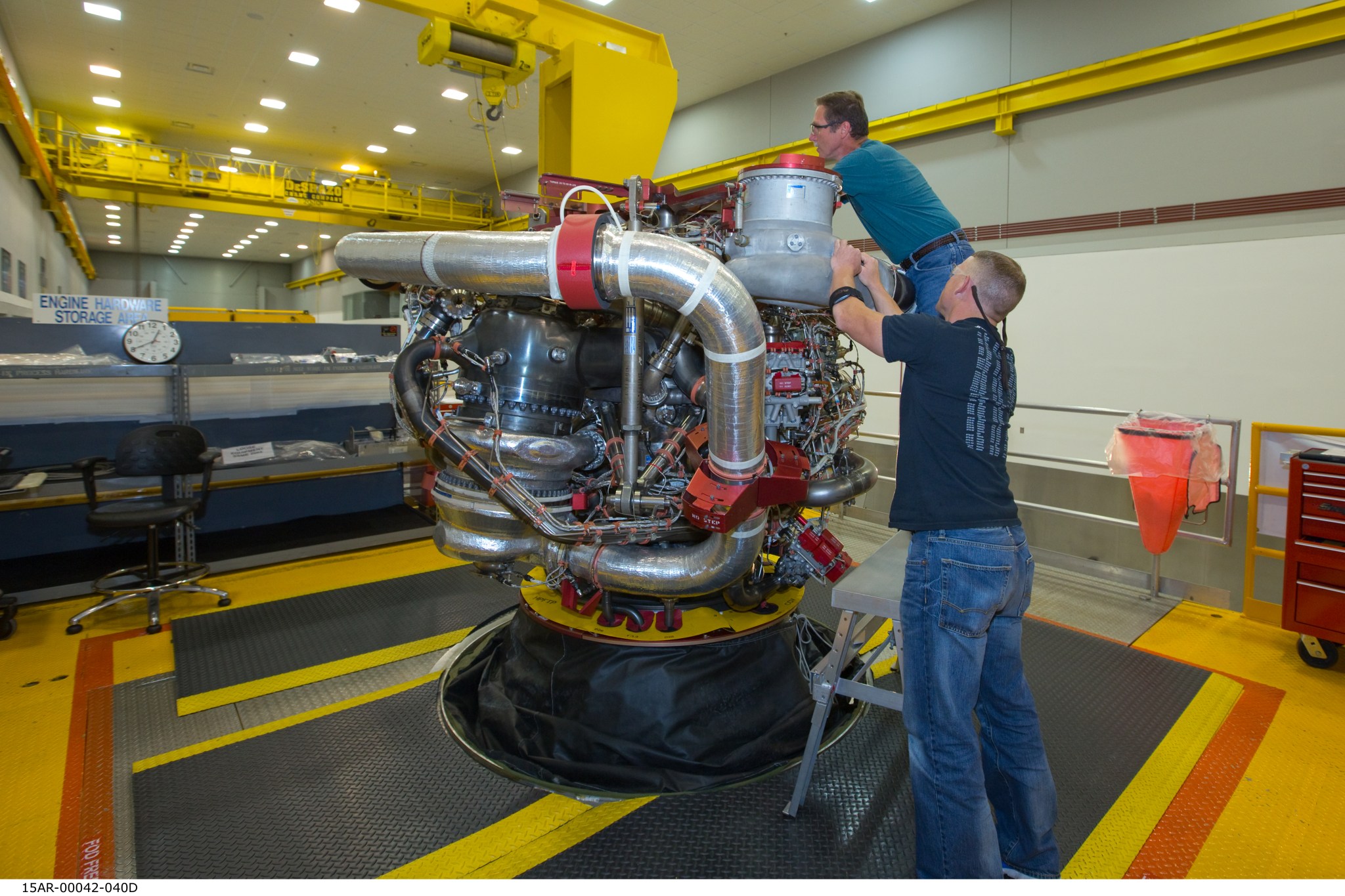NASA’s Space Launch System, America’s new deep space exploration rocket, has a new addition to the family with the completed assembly of RS-25 Engine 2063. The RS-25 engine will power the core stage of the SLS, the launch vehicle that will take humans and cargo on deep space missions, including to an asteroid and ultimately to Mars.
Engine maker Aerojet Rocketdyne completed assembly of RS-25 Engine 2063 at NASA’s Stennis Space Center near Bay St. Louis, Mississippi, after approximately three months of work. The new engine becomes the 16th assembled RS-25 flight engine in inventory for SLS flights. It will be one of four RS-25s used to power Exploration Mission 2, the second SLS launch targeted for the 2021 time frame. Testing of these four engines will begin later this year as work accelerates on NASA’s newest launch vehicle.
While SLS is designed for deep space exploration far beyond Earth. It’s also designed to take advantage of the investments the nation has already made in space exploration, including the RS-25.
Fourteen of the 16 RS-25 engines in the SLS inventory are veterans of numerous space shuttle missions, where they were commonly referred to as Space Shuttle Main Engines, or SSME. Engine 2063 is one of two additional “rookie” engines without previous shuttle flight experience. Engine 2063 will undergo acceptance testing to verify it is acceptable for flight, checking out the completed system. It does include some previously flown hardware, including the four turbopumps which have flown on several shuttle missions.
“Assembly of this new engine is part of a very busy year for the RS-25 team,” said Steve Wofford, manager of the SLS Liquid Engines Office at NASA’s Marshall Space Flight Center, where the SLS Program is managed for the agency. “We’re testing one engine, developing a new controller and planning to manufacture new engines in the future.”
Engine 2063 joins a famous family with a proud tradition. The RS-25 is one of the most tested large rocket engine in history, with more than 3,000 starts and over a million seconds of total ground test and flight firing time over 135 missions.
Four RS-25 liquid propellant engines will power the SLS for the eight-minute climb to orbit with the help of two solid propellant boosters – both flight qualified components of the Space Shuttle Program and now essential to SLS’s unmatched payload capability.
“Completion of this engine is a significant accomplishment, considering it’s been nearly five years since the last RS-25 was assembled,” said Jim Paulsen, vice president of Program Execution Advanced Space & Launch Programs Aerojet Rocketdyne. “It’s been a great opportunity for the team’s SSME veterans to get reacquainted with this engine. For new members of the team, it’s been an invaluable introduction to this dependable engine.”
Four previously-flown RS-25s will be attached to the first SLS core stage and test fired together as a stage before being approved for the first SLS launch planned for 2018.
The SLS team began test firing one of the development engines with a new controller earlier this year to make sure it can meet the different performance and environmental conditions required by the SLS. The entire flight engine inventory will be upgraded with new state-of-the-art engine controllers, insulation and other details.
“There is nothing in the world that compares to this engine,” added Paulsen. “It is great that we are able to adapt this advanced engine for what will be the world’s most powerful rocket to usher in a new space age.”
After the first four flights, NASA will start using brand new RS-25 engines. These “next generation” engines will be more affordable by utilizing components made with the latest 21st century electronics, cost saving manufacturing techniques and more cost effective materials.
“The RS-25 is still one of the most advanced engines in the world,” said Philip Benefield, himself an SSME veteran now part of the team adapting the RS-25 to SLS. “It’s an interesting challenge to put together a new SLS engine team of shuttle veterans and new engineers, much like the RS-25 incorporates veteran shuttle engine hardware and new hardware to meet new requirements.”
For one of those new engineers, working on the RS-25 is the high point of a life-long interest in space exploration.
“Ever since I was in the third grade when I fell in love with the space program, I have always had the desire to work on a project that would take people further into space than ever before,” said Esteban Barajas, a mechanical design engineer at Aerojet Rocketdyne.
“Now, being able to bring the space shuttle main engines roaring back to life with the many talented engineers who originally designed and built them is an incredible opportunity. As a young engineer, the experience has truly been invaluable.”
For more information about SLS, visit:




























